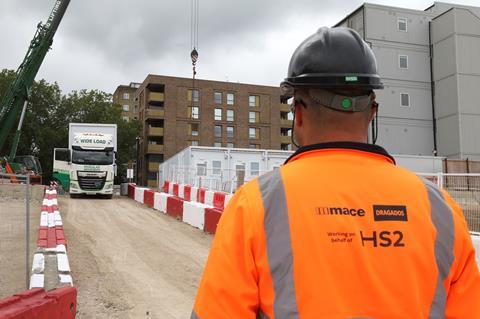Overspends, delays and an under-delivery on benefits is costing the public purse
A failure to effectively plan and deliver infrastructure projects over the next decade could cost British taxpayers £23bn, Mace has warned.
According to MaceÔÇÖs data up to 80% of large infrastructure schemes globally are delivered late and over budget, and then under-deliver on benefits.

Jason Millett, chief executive for consultancy at Mace, said: ÔÇ£Unfortunately, not all infrastructure projects are properly planned and delivered, resulting in delays, cost overruns and under-delivery against expected benefits.
ÔÇ£The negative impact of this is significant, with our calculations showing that, globally, taxpayers could be paying $900bn (┬ú670bn) by 2030 to cover the costs.ÔÇØ
The report, A blueprint for modern infrastructure delivery, said that there would be more than £77bn spent on infrastructure in the UK every year from 2030.
MaceÔÇÖs data revealed the average cost implications of overruns, or the amount of benefits lost out on due to delays and overspends, would be $14.5bn (┬ú11bn), while the amount of overall benefits reduced by poor planning would cost the British public (┬ú12bn), bringing the total financial hit to ┬ú23bn.
Mace said the main problems were a lack of clarity of the desired outcome when deciding on which schemes to take forward, and the poor predictive abilities of project teams in the early stages of schemes, who are pressured into providing fixed point price estimates and programmes well before accurate predictions are possible or realistic.
Millett said: ÔÇ£With covid-19 placing greater emphasis on the importance of infrastructure as an economic multiplier, it is more important than ever that we get this right.
ÔÇ£Our major projects and programmes must have clarity of direction and outcome-focused decision making to ensure they do not become a burden, but rather an enabler for post-pandemic growth.ÔÇØ
The report outlines ten key recommendations for how to correct the infrastructure approach, including implementing independent scrutiny panels on big projects, changing procurement, and spending more money upfront to properly examine, scope and plan schemes.
MaceÔÇÖs recommendations for global infrastructure projects
- Clear outcomes
Organisations and projects with a clearly and coherent stated outcome are much more likely to succeed. The best projects form part of an overarching strategy for a regional or national economy. A number of countries around the world have independent bodies to filter projects against national strategic objectives. - Tackle corruption
There needs to be transparency in the public contract process and award, conflicts of interest need to be managed and independent agencies should be brought into large, higher-risk projects and programmes from the start. - Sensible procurement
Procure external organisations based on outcomes to better utilise the private sectorÔÇÖs expertise. Infrastructure owners and governments also need to take a more constructive approach to trying to pass risk down the supply chain. In reality major risks always sit with the client but they pay for them twice when pushing them onto the supply chain. - Improve your forecasting
Follow a Tetlock process for forecasting cost and programmes. Ensure you take into account optimism bias and planning fallacy. Provide forecasts to a range ÔÇô not a point estimate ÔÇô until you get enough clarity of scope and costs to move to a fixed point with contingency. - Give consultants who forecast Brier scores
The accuracy of predictions made by private organisations across the many public sector projects should be tracked. Over time it will be clear which organisations are most accurate and also provide them with a positive incentive to improve their predictions and not give in to undue pressure. A ranked table of organisations accuracy can then be shared. - Create an independent scrutiny panel
If your project or programme is large enough or you are a government agency with many large projects you should create a panel of industry heavyweights outside normal public sector structures to challenge the project scope, timescales and costs. - Spend more money earlier
Many projects try and skimp on spending the necessary amount of money upfront to properly examine, scope and plan the scheme. By spending more money and time earlier, you to reduce the risks later on in the project, while giving more room for innovation. - Quality over quantity
Remember that it is the quality of the people working on the project that make the difference. Find good people and empower them to get on with delivering the outcome. This includes finding consultants and supply chain partners with the right capabilities and appropriate delivery models that capitalise on that. - Appropriate planning constraints
If a major project needs to apply for planning now but will not be delivered for 15 years there needs to be enough flexibility in the planning to take account of evolving technology and trends. Planning regimes need to have clear guidance around the level of detail which should be provided to receive approval. This will help combat the overly detailed development of schemes at a too early stage. - Training academy for project sponsors and leaders
Many large infrastructure owners are public bodies who can struggle to attract the right calibre of people to work for them due to pay constraints. In emerging markets in particular, people may also have limited experience working on large infrastructure projects. Hence it makes sense to provide high-quality practical training to current government employees to try and upskill them and enhance their skills.



























No comments yet